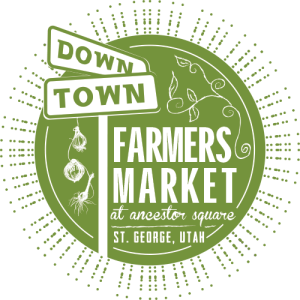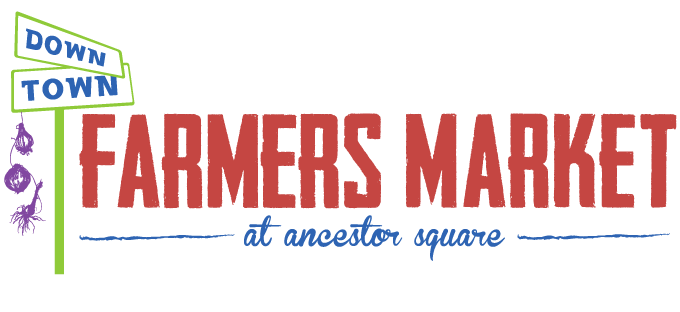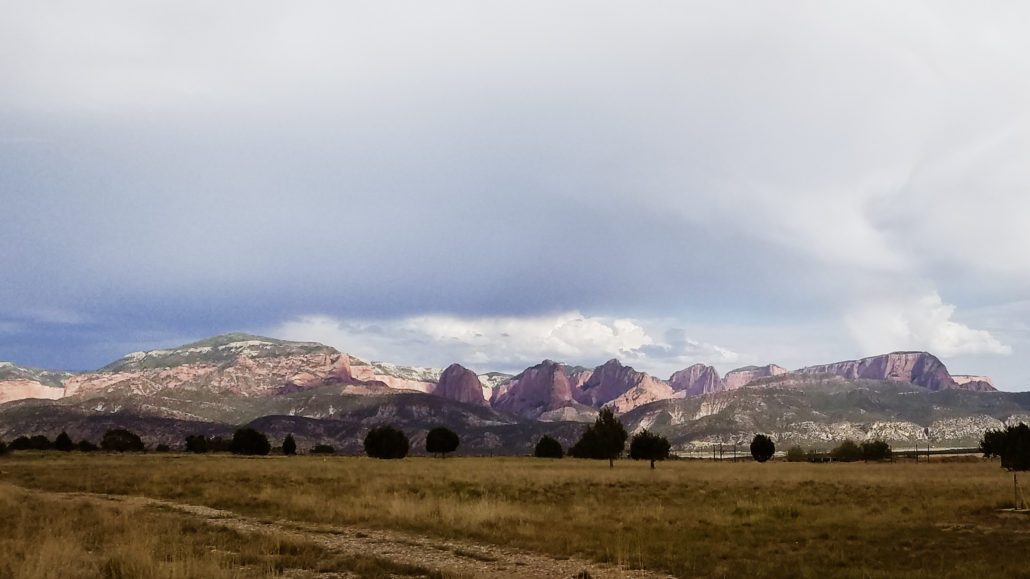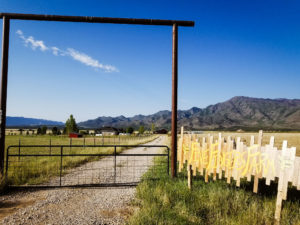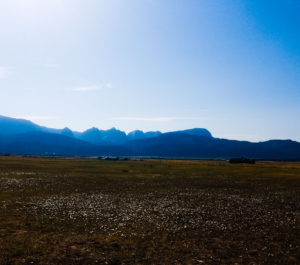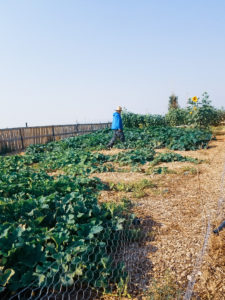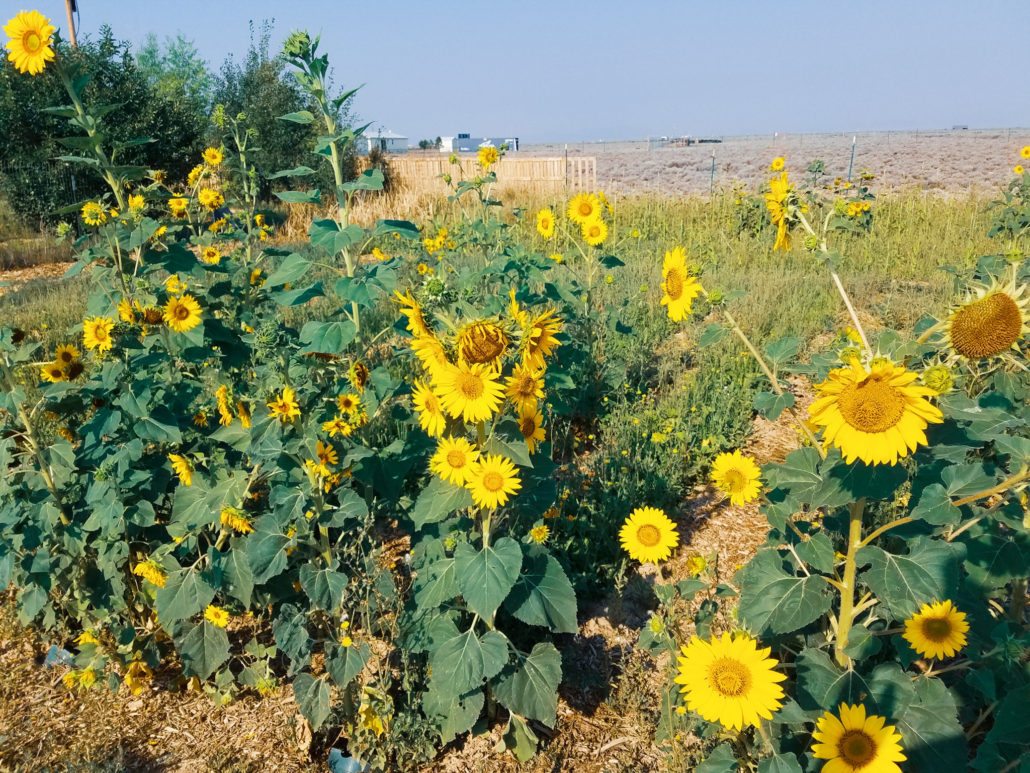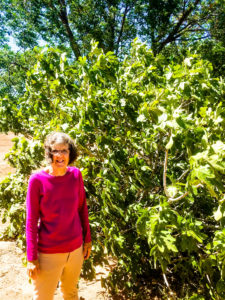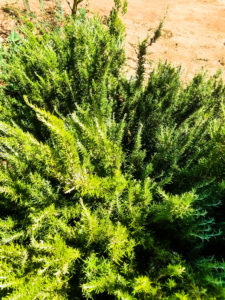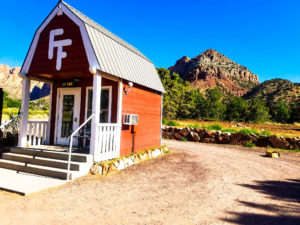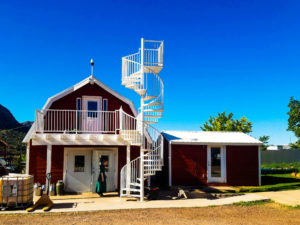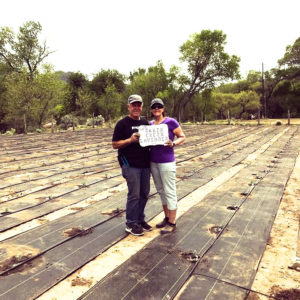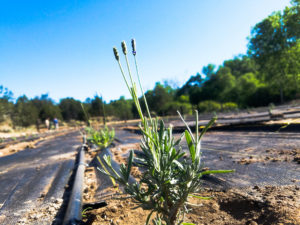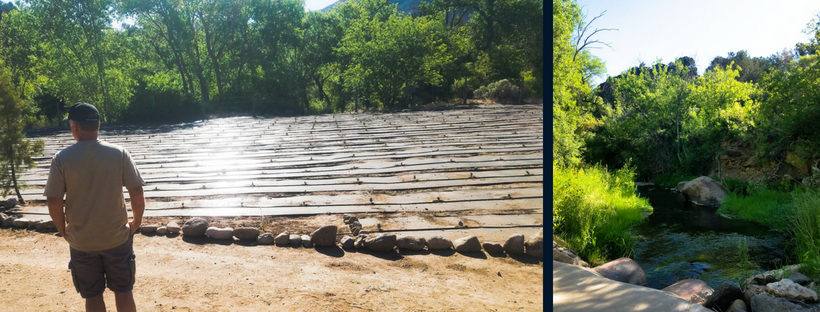Baked by Lodi
Being the Market Manager, I have spent the season honing my market routine and shopping strategies. I know if want salad greens I need to buy them first thing. I make sure to get different herbs for cooking. I try to support every farmer and rotate from week to week. I never buy the same thing two weeks in a row. There is one exception to this rule however, and that happens to be the irresistible Biscuit and Gravy Cupcake made by Baked by Lodi. It starts out with a biscuit base that is hollowed out and filled with a ball of cheesy hash brown goodness, then it’s drizzled with homemade gravy, sprinkled with spicy sausage, and tucked up in a neat, white box. Sheer breakfast perfection. Baked by Lodi also offers new and exciting specialty items each week like candied-bacon-beer bread, grilled pineapple hand pies, and delectable cupcakes. With the opportunity arising to interview bakers, I knew I had to pick the brains of Heidi Ellsworth and Logan Mathis the creative couple behind the brand. As I pulled up to their beautiful townhome, I looked up to see Logan’s head floating in midair out the cracked door, wearing his signature Cheshire grin. I started laughing. After working around him the entire summer, I can honestly tell you this is how he looks 100% of the time, except his body is usually visible. I walked up to the door and he welcomed me in and Heidi greeted me at the edge of the living room. “We’re REALLY excited if you can’t tell,” She said laughing. “Good. So am I!” I answered as I followed them down their hallway into the kitchen.

Cinnamon rolls, Heidi and Logan at the market, and carrot cake cupcakes
As we reached the end of the hallway, I was shocked to look up and see that were a dining room table would normally be, industrial stainless-steel racks of cooking supplies lined the wall. Along with two matching stainless-steel islands, a second fridge, and tons of
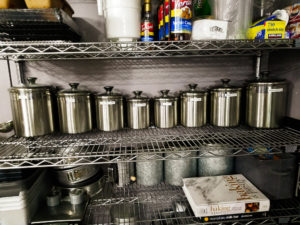
Industrial shelves full of goodies.
neatly organized cooking accoutrements. “Um…. WOW!” I said, slightly stunned. Remembering that Lodi is a fledging bakery, I asked, “Did you get all this set up just for the farmers’ market?” Heidi responded in a nervous giggle, “Uh no. I’ve always been into baking and so has Logan. So, we kind of have this set up like this more out of necessity.” An instant pang of jealousy rushed down my spine. “Ya, this isn’t even all our baking stuff. A lot of it we keep in sealed organizers so we have room to work. I think we have 4 big ones upstairs,” Logan added. I turned to him a little dumbfounded, “Seriously?” I asked as they both agreed. “How did you guys get into this? I mean, how did you guys decide that baking was going to be your thing?” Heidi sat down at the countertop and I followed her lead. “Well, I grew up baking with my grandma. She has always been the baker in the family and I loved it. She taught me a lot.” Heidi went on to tell me about visiting her Uncle in San Diego and watching an episode of Cupcake Wars on the Food Network. “I just remember seeing that show and thinking to myself that I could do that. I came back and signed up for a couple of Wilton cake decorating classes, tried it out, and loved it.” She moved out to San Diego, enrolled in a culinary arts program, and started working part time in a kitchen supply store (hence the massive collection of baking instruments). I sat there impressed. “No wonder your stuff is so good, you’re a professional!” I added. Heidi smiled, “Not quite, I didn’t finish the program, but I like to think I know what I’m doing.” I can vouch, Heidi knows what she’s doing. Logan leaned against the kitchen counter smiling. “And how do you fit into all of this? How did you get into baking?” I asked.

CUPCAKES
Logan shrugged, “I like sweet stuff.” I laughed. “No, I grew up with a lot of cooking in my family and I like baking. Actually, that’s how

A sign in the couple’s home.
I convinced Heidi to go on our first date, I told her I made the best pumpkin chocolate chip cookies.” Again I laughed, looking at Heidi, “No way! That’s adorable!” Heidi nodded, smiling, “Ya, and after all that talk he forgot to put the chocolate chips in.” “They were still amazing, but I did forget the chocolate chips,” Logan laughed. I shook my head at the sitcom cuteness of the whole thing. It snowballed from there. They started baking together and Heidi taught Logan more and more tricks of the trade until Logan and Heidi became Lodi. “Now Logan does most of the baking since I work full time, but when I get home we’re in here together.” Logan and Heidi then told me some of their crazy stories about making it all work. For example, their stove caught fire and hasn’t been the same since. So, now they have to set several timers throughout the baking process to remind them to turn the goodies in order to ensure an even bake. I felt overwhelmed for them since timing everything right in even a stir fry gives me a panic attack.
“How do you guys do all that and come up with recipes?” I asked. “We usually start with old family recipes, then we go from there and try to make it our own.” Heidi answered. “We just try tons of stuff.” Logan added, “You’d actually be surprised at how much stuff doesn’t work.” He chuckled. “YES!!! Sometimes it’s recipes we’ve made 100 times and they don’t turn out!” Heidi added. “So, we chuck them and start over.” This quickly turned into a recount of failed flavor combinations and the successful recipes that those led to. Sitting there listening to them go back and forth, it wasn’t hard to see the hard work that goes into Baked by Lodi. This is not just a hobby that let’s them wear matching t-shirts, it’s their passion and creative outlet. It’s no wonder the food is so good. “So…. What are your plans for Baked by Lodi? I mean what do you want to see happen?” I questioned, already clearly seeing the answer before me. “Have you ever seen Cake Boss?” Logan asked seriously. Again, I couldn’t help but laugh, “Yes, I’ve seen Cake Boss.” “That.” Logan smiled. This time we all laughed together, “Honestly though, we have had so much fun at the market doing this and making coffee that it seriously has us talking about getting the ball rolling on a joint bakery coffee shop.” Heidi added. I couldn’t help but emphatically encourage them for my own selfish daydream of biscuit and gravy cupcakes all day every day. Logan walked over to one of the fridges and whipped out a plate of fresh, white chocolate cupcakes and offered me one.

In the kitchen and some delicious breads cooling.
We sat and talked for a little while longer about making the leap as a small business to a brick and mortar location. They told me about possible menu options and décor ideas. I have to admit, I was very excited. This is one of the cornerstone beliefs of the Farmers’ Market, we want to be an affordable way for locals to bring their products to the masses. Without a place like that in our community, how would a small business get their foot in the door? The barriers to entry are too great and it would leave a lot of local dreams dead in the water. We are so proud to have Baked by Lodi as one of our anchor bakers at the market. You can support them almost every Saturday and place specialty orders throughout the week for delivery. Baked by Lodi also offers dessert catering and are now booking for the holidays. You can follow them on Instagram or contact them at (435)467-4410.
